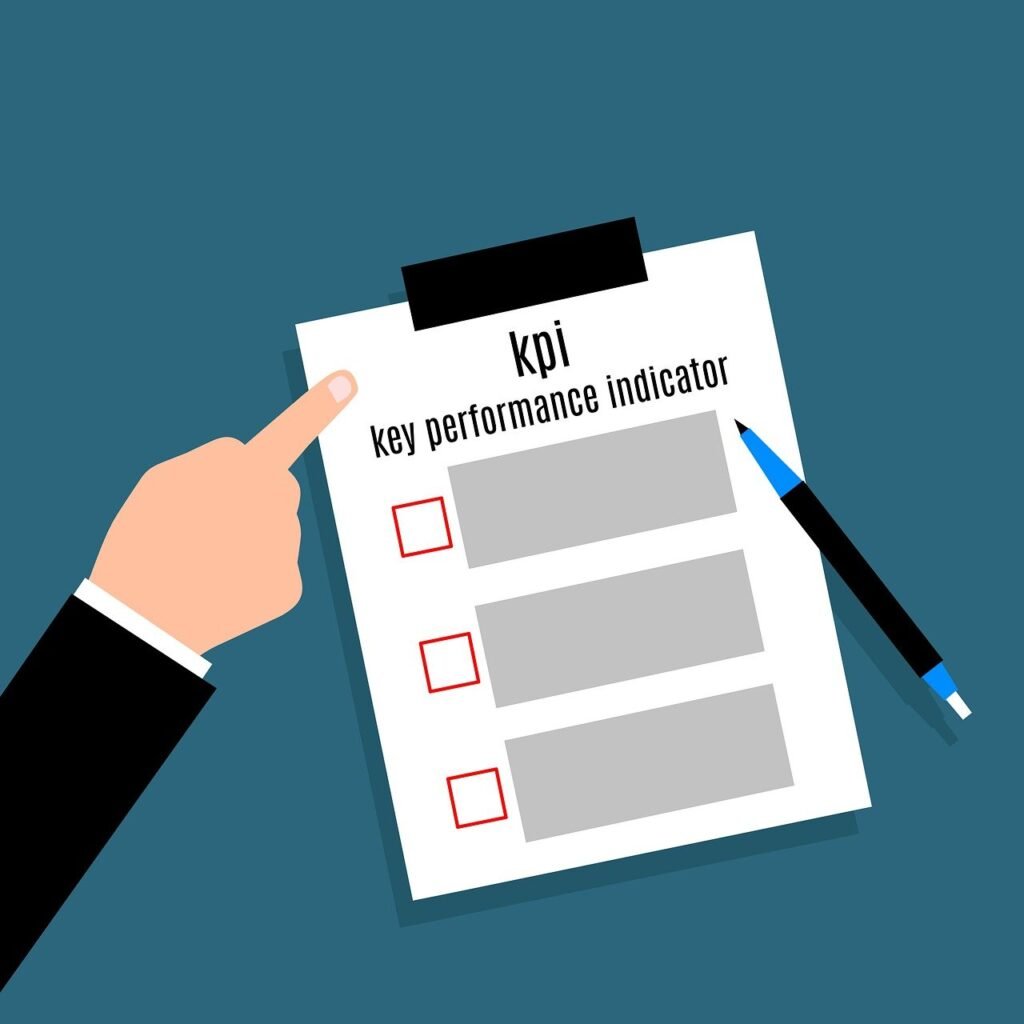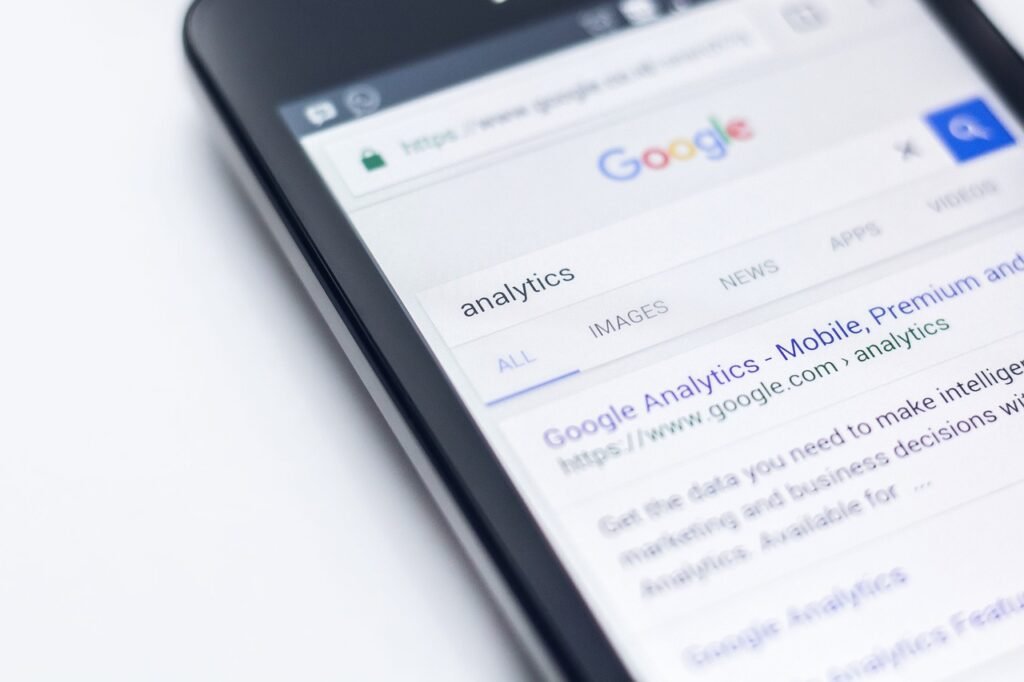This Article has been revised, edited and added to, by Poulomi Chakraborty.
- Comparing Traditional Marketing and Influencer Marketing
- Crafting Effective Influencer Content
- Identifying Effective Content Types for Influencer Campaigns
- Strategic Planning of Content Types in Influencer Marketing Campaigns
- Measuring Success in Influencer Marketing Campaigns
- Key Performance Indicators (KPIs)
- Tools for Tracking and Analysis
- Regular Reporting and Adjustment
- Learning from Data
- Developing a Themed Content Series
- Integrating Seasonal and Event-Driven Content
- Leveraging Data-Driven Insights for Content Customization
- Establishing Co-Creation Workshops with Influencers
- Creating Cross-Promotional Opportunities
- Optimizing Influencer Collaborations for Maximum Impact
- Selecting the Right Influencers
- Building Strong Relationships
- Collaborative Planning and Execution
- Utilizing Cross-Promotion
- Tracking and Enhancing Performance
- Crafting a Cohesive Brand-Influencer Narrative
- Implementing a Tiered Influence Strategy
- Fostering Long-Term Partnerships
- Utilizing Advanced Analytics for Fine-Tuning Campaigns
- Engaging in Collaborative Content Development
- Conclusion
When diving into the vibrant world of influencer marketing, the content you create can either catapult your campaign to success or cause it to fizzle out unnoticed. The essence of influencer marketing lies in the ability to weave authenticity with strategy, engaging an audience through the voices they trust most. As we unpack how to craft compelling content for these campaigns, we’ll focus on understanding the nuances that make this approach so powerful. Let’s start by comparing traditional marketing with influencer-driven strategies to pinpoint where your content can shine.
Comparing Traditional Marketing and Influencer Marketing

In the realm of digital marketing, traditional methods and influencer-driven campaigns stand as distinct approaches, each with their strengths and challenges. Traditional marketing often relies on direct advertisements, such as TV commercials, print ads, and more recently, banner ads on websites and paid search results. The core of this approach is control—the brand has full command over the message, the medium, and the delivery.
The Shift in Audience Perception
However, the digital age has shifted consumer perceptions significantly. Audiences today are more skeptical of overt advertising; they seek authenticity and personal connection that traditional ads often lack. This is where influencer marketing leaps into the spotlight, offering a blend of personal endorsement and subtle persuasion that can feel more genuine to a viewer.
The Role of Trust and Authenticity
Influencers, by their nature, have built-in trust with their audience. Followers believe in their favorite influencers’ opinions and recommendations, seeing them as peers or aspirational figures rather than corporate mouthpieces. When an influencer shares content about a product or service, it comes across as a friend making a recommendation rather than a company pushing a sale.
Strategic Content Creation
This trust base allows for a unique content strategy. Instead of crafting a one-size-fits-all ad, influencer campaigns can be tailored to the style and tone of the influencer’s existing content. This not only ensures authenticity but also enhances engagement. The content must align seamlessly with the influencer’s narrative, so it doesn’t disrupt the flow of their usual postings but rather complements it.
Measurable Impact and Engagement
The engagement rates seen with influencer content often surpass those of traditional advertisements due to this perceived authenticity. Where a banner ad might be ignored, a post from a beloved influencer discussing the same product can generate extensive interaction from likes and comments to shares and actual purchases.
Tactical Implementation
The tactical part of employing influencer content lies in its implementation. Brands need to work closely with influencers to create content that feels genuine and also serves the brand’s objectives. This involves a deep understanding of both the influencer’s audience and the brand’s target demographic to craft messages that resonate and engage across both spectra.
This nuanced approach to marketing, focusing on relationships and genuine connections rather than just visibility and reach, sets influencer marketing apart from traditional methods. As we delve deeper into how to craft this compelling content effectively, remember that the heart of this strategy is authenticity—aligning your brand’s message with the influencer’s voice in a way that speaks naturally to the audience.
Crafting Effective Influencer Content

When constructing your influencer marketing strategy, the creation of content isn’t just about pairing with an influencer and letting them handle everything. There’s a delicate balance to maintain between the influencer’s creative freedom and your brand’s message. Here’s how you can craft content that hits the right notes.
Understanding the Influencer’s Audience
The first step in crafting effective content is to deeply understand the audience of the influencer. Each influencer attracts a specific demographic based on factors like interests, age, lifestyle, and even values. Before even beginning content creation, identify what appeals to this audience. What are their pain points? What kind of content do they engage with most—images, videos, blogs, or stories?
Aligning Content with Audience Needs
Once you understand the audience, tailor your content to meet their needs and preferences. This might mean creating interactive content, such as polls or Q&A sessions where the influencer interacts directly with their followers, or producing high-quality videos that resonate with an audience that prefers visual storytelling.
Maintaining Authenticity
As you craft your message, keep authenticity at the forefront. Influencers resonate with their audience because of their genuine nature. Any content that feels forced or overly promotional can alienate both the influencer’s followers and harm the influencer’s credibility. Collaborate with the influencer to create a message that integrates naturally into their typical content.
Integrating Storytelling
Storytelling is a powerful tool in influencer content. Rather than just showing the product, have influencers share personal stories or experiences that involve the product. This method helps the audience visualize themselves using the product and enhances the relatability of the post.
Creating Engaging and Shareable Content
The ultimate goal of your content should be to engage the audience to the point where they want to share it with others. This means it has to be interesting, visually appealing, and elicit an emotional response. Consider using humor, inspiration, or even tapping into current trends to make the content more engaging.
Consistent Evaluation and Adaptation
Finally, effective content is not set in stone. It requires consistent evaluation and adaptation based on how the audience responds. Use analytics to track engagement rates, clicks, and conversions from influencer posts. Be prepared to tweak your strategy based on what the data tells you about audience preferences and behaviors.
By focusing on these areas, your influencer marketing content will not only be more compelling but also more effective in achieving your campaign goals.
Identifying Effective Content Types for Influencer Campaigns

When it comes to influencer marketing, not all content types yield the same results. Different formats resonate differently depending on the influencer’s niche, the platform, and the audience’s consumption preferences. Here’s a look at some of the most effective types of content that you can leverage in your influencer marketing campaigns.
Video Content
Videos are incredibly powerful in the digital marketing landscape. They are engaging, easy to consume, and can convey a lot of information in a short amount of time. For influencers, video content can range from brief product reviews or tutorials on platforms like Instagram and TikTok, to longer, more detailed content on YouTube.
Product Tutorials and Demonstrations
These are highly effective because they show the product in action, helping viewers understand how it works and the benefits of using it. Influencers can add their personal touch by sharing their experiences and results, making the content relatable and trustworthy.
Behind-the-Scenes Videos
Audiences love getting an insider look at how things are made or getting to know the people behind a brand. Influencers can share behind-the-scenes content from a brand event or from the making of a product, providing a unique perspective that isn’t usually available through traditional marketing channels.
Image-Based Content
For platforms like Instagram, Pinterest, and Facebook, high-quality images are crucial. They catch the eye and can communicate a message at a glance. Influencers can use images to showcase products in real-life settings, styled photoshoots, or even in infographic form.
Styled Product Shots
These are visually appealing and can be used by the influencer to show how the product fits into their lifestyle or aesthetic. It helps the product feel more accessible and desirable.
Before-and-After Photos
For beauty and health products, before-and-after images can be particularly persuasive. They provide tangible proof of effectiveness and can drive strong audience engagement and interest.
Blog Posts and Articles
For influencers with a dedicated following on their blogs or those who use platforms like Medium, detailed blog posts and articles can be incredibly influential. They allow for deep dives into topics, detailed product reviews, and personal storytelling.
In-depth Reviews and Case Studies
These provide a thorough examination of the product or service, discussing features, benefits, and personal experiences. Such content can influence purchasing decisions, especially when it includes personal anecdotes that underscore the influencer’s genuine opinion and results.
How-to Guides and Tips
These are great for educational content that adds value beyond just promoting a product. They help establish the influencer and by extension, the brand, as authoritative and helpful.
Social Media Stories and Live Streams
Real-time content like Instagram Stories, Facebook Live, and TikTok Live offers immediacy and interactivity that other content formats lack. Influencers can use these tools to host live Q&A sessions about the product, do live demonstrations, or just talk about their day-to-day experiences with the brand.
Interactive Q&A Sessions
These sessions allow followers to ask questions, which the influencer can answer in real-time, providing immediate clarification and creating a personal connection.
Live Demonstrations
Seeing a product used live can significantly boost credibility and viewer interest, as it demonstrates confidence in the product’s performance.
Each of these content types offers different advantages and can be mixed and matched within a campaign to maintain freshness and engagement. The key is to select the types that align best with the influencer’s strengths and audience preferences.
Exploring Interactive Content Types
Interactive content types such as quizzes, polls, and interactive videos can significantly increase user engagement and provide valuable insights into the audience’s preferences and behaviors. This type of content not only keeps the audience engaged but also encourages them to actively participate in the narrative of your brand.
For example, incorporating an interactive quiz within a blog post or a video can help in understanding what features your audience values the most in your product, which can be incredibly useful for product development and refinement.
Leveraging User-Generated Content
Encouraging influencers to facilitate user-generated content (UGC) campaigns can create a sense of community and authenticity around your brand. When followers see real people using and endorsing your product, it adds a layer of trust and relatability. For startups, this is an invaluable method to amplify word-of-mouth marketing at a relatively low cost.
UGC can be strategically integrated into campaigns by having influencers ask their followers to share their own experiences and photos using your product, potentially offering incentives for the best posts which further drives engagement.
Utilizing Story-Driven Content
Creating a narrative that followers can relate to or get inspired by is a powerful way to build a connection. Story-driven content crafted by influencers can depict a problem-solving scenario where your product comes into play as a solution.
This not only illustrates the usefulness of your product but does so in a way that’s emotionally engaging and relatable. For startups, stories of innovation, overcoming challenges, or unique uses of your product can resonate well with an audience, especially when told through the voice of an influencer they trust.
Integrating Virtual and Augmented Reality
While more advanced, integrating elements of virtual reality (VR) or augmented reality (AR) into your content strategy can offer a cutting-edge experience that captures audience attention.
For instance, using AR filters on platforms like Instagram that allow users to virtually try on a product or visualize it in their space can be a game-changer for products like cosmetics, furniture, or fashion. This type of content is not only engaging but also highly shareable, increasing the virality potential of your campaigns.
Conducting Live Sessions with Influencers
Live sessions are becoming increasingly popular, especially for startups looking to create a direct dialogue between their influencers and audience. These sessions can range from product demonstrations, live tutorials, to Q&A sessions where the influencer can answer real-time questions about the product.
The real-time interaction significantly boosts engagement and can provide instant feedback on your product, which is invaluable for any startup looking to quickly iterate and improve.
By incorporating these strategic content types into your influencer marketing campaigns, startups can effectively enhance their outreach and engagement, paving the way for successful conversions and building a loyal customer base.
The key is to remain authentic and innovative, ensuring that the content not only promotes your product but also adds real value to the audience’s experience.

Related: Check out our free SEO suite

Strategic Planning of Content Types in Influencer Marketing Campaigns
Strategically planning content types within an influencer marketing campaign requires a thoughtful approach that aligns with both the brand’s goals and the influencer’s strengths. Here’s how you can plan these content types effectively.
Set Clear Campaign Goals
Before deciding on the types of content, it’s crucial to define what you want to achieve with your influencer marketing campaign. Are you looking to increase brand awareness, drive sales, or perhaps launch a new product? Your goals will dictate the type of content you should focus on.
Choose the Right Influencers
Not all influencers will be right for all types of content. For instance, an influencer who excels at creating high-engagement video content might not be as effective at writing blog posts. Select influencers who not only have a reach in your target demographic but also have proven skills in creating the types of content that align with your campaign goals.
Develop a Content Calendar
Planning when and how content will be released is just as important as the content itself. A content calendar helps to ensure a consistent flow of content that keeps the audience engaged throughout the campaign. This calendar should include key dates for product launches, seasonal events, or other relevant milestones that the content can tie into.
Integrate Diverse Content Types
To keep the campaign dynamic and engaging, incorporate a mix of content types:
Launch Phase
Start with a bang by using high-impact content like videos or live streams that grab attention quickly. This can be a detailed video review or a live unboxing event.
Engagement Phase
Follow up with image posts, stories, and interactive content like polls or Q&A sessions to keep the conversation going. These pieces keep the audience engaged and allow for direct interaction with the influencer and the brand.
Sustaining Interest
Introduce in-depth blog posts, articles, or behind-the-scenes content as the campaign progresses. This type of content provides depth and detail, reinforcing the campaign’s messages and values over time.
Leverage Cross-Platform Promotion
Since most influencers are active on multiple social platforms, strategize how each piece of content can be adapted and shared across these platforms to maximize reach and impact. For example, a video created for YouTube can be cut into shorter segments for Instagram Stories or TikTok.
Monitor and Adapt
Regularly monitor the performance of each content type and be ready to adapt your strategy based on what works. If certain types of content are performing exceptionally well, consider reallocating resources to produce more of that content. Conversely, if something isn’t working as expected, it’s important to analyze why and adjust accordingly.
Collaborate with Influencers on Content Creation
Remember that influencers are content creation experts with a deep understanding of what resonates with their audience. Collaborate closely with them during the content creation process to ensure that the content not only meets the campaign’s goals but also aligns with their personal brand and style. This collaboration can lead to more authentic and effective content.
By following these strategic steps, you can ensure that each type of content not only serves the campaign’s overall goals but also strengthens the relationship between your brand, the influencer, and their audience.
Measuring Success in Influencer Marketing Campaigns

Understanding how to measure the success of your influencer marketing campaigns is crucial for refining strategies and proving ROI. Let’s explore the key metrics and tools that can help you gauge the effectiveness of your campaigns.
Key Performance Indicators (KPIs)
The choice of KPIs largely depends on the specific goals of your campaign, but here are some common metrics used to assess influencer marketing success:
Engagement Rate
This includes likes, comments, shares, and saves. High engagement rates typically indicate that the content resonates well with the audience. It’s a strong indicator of how compelling and relevant the audience finds the influencer’s content.
Reach and Impressions
Reach refers to the number of unique viewers who see the content, while impressions track the total number of times the content is displayed. These metrics are important for understanding the scale of your campaign’s visibility.
Click-through Rate (CTR)
For campaigns aimed at driving traffic to a website or landing page, CTR is key. It measures how effectively the content encourages viewers to take the action of clicking a link.
Conversion Rate
This measures how many of the clicks actually resulted in the desired action, such as making a purchase or signing up for a newsletter. It’s crucial for campaigns with direct sales goals.
Brand Sentiment
Analyzing comments and interactions for sentiment can provide insights into how the brand is perceived in relation to the influencer’s content. This is more qualitative but can be vital for understanding brand impact.
Tools for Tracking and Analysis
Several tools and platforms can help brands track these KPIs effectively:
Built-in Social Media Analytics
Platforms like Instagram, Facebook, and YouTube offer built-in analytics that provides data on reach, impressions, engagement, and other user actions.
Google Analytics
For tracking website traffic from influencer campaigns, Google Analytics is indispensable. You can set up tracking codes to monitor the behavior of users coming from influencer links, including their actions on your site.
Influencer Marketing Platforms
Tools like AspireIQ, Upfluence, and Traackr offer specialized services for managing influencer relationships and tracking campaign metrics across multiple platforms.
Social Listening Tools
Platforms like Brandwatch and Hootsuite Insights allow you to monitor mentions, sentiments, and trends associated with your campaign across the internet, not just on specific platforms.
Regular Reporting and Adjustment
Regularly compiling these metrics into reports allows for ongoing assessment of your campaign’s performance. This not only shows whether the campaign is meeting its goals but also what can be improved. For instance, if certain types of content or specific influencers are not performing well, you can adjust your strategy in real-time to focus on more effective tactics.
Learning from Data
Beyond measuring the immediate success of a campaign, data from influencer marketing efforts can provide deep insights into customer preferences, behavior, and response to different content types. This learning can inform broader marketing strategies and help fine-tune future campaigns.
Developing a Themed Content Series
A highly effective strategy is to develop a themed content series that can be rolled out over several weeks or months. This approach ensures consistent engagement with your audience and builds anticipation for each new piece.
For instance, a tech startup might collaborate with influencers to create a “Tech Tuesdays” series where every Tuesday, a new use case of the product is explored or a new tech tip is shared. This method not only keeps the content fresh but also establishes a routine that followers can look forward to, thus increasing repeat engagement.
Integrating Seasonal and Event-Driven Content
Aligning your content strategy with seasonal events, holidays, or even current news can make your campaign more relevant and timely. For example, a fashion startup could launch a summer essentials campaign with influencers showcasing how their products fit into various summer activities.
This not only capitalizes on the seasonal appeal but also connects the product with real-life use cases, enhancing its appeal.
Leveraging Data-Driven Insights for Content Customization
Using data analytics to understand what types of content perform best can help you tailor your strategies to meet the demands of your audience more effectively. Analyze engagement metrics from past campaigns to identify which content types were most successful, and use this insight to inform your future content choices.
For example, if video content typically drives more engagement, you might prioritize video testimonials or tutorials for your next campaign.
Establishing Co-Creation Workshops with Influencers
Organizing workshops where influencers can come together to brainstorm and co-create content can yield unique and diverse content ideas. These sessions not only foster creativity but also strengthen the relationship between your brand and its influencers, leading to more authentic content.
Influencers can share insights into what their audiences resonate with, providing your brand with valuable feedback that can be used to adjust marketing strategies.
Creating Cross-Promotional Opportunities
Plan for content that can be cross-promoted across different influencer platforms and your own brand channels. This approach amplifies the reach of your content and ensures that it touches various segments of your target audience.
For instance, a video created by an influencer could be featured on their YouTube channel, shared in shorter clips on your Instagram stories, and discussed in more detail in a blog post on your website.
By incorporating these strategic elements into your planning, your influencer marketing campaigns can become more structured, targeted, and effective, ultimately leading to greater brand awareness and customer engagement. Remember, the key to successful influencer collaboration is not just in the creation but also in the strategic dissemination of content.
Optimizing Influencer Collaborations for Maximum Impact

Effective collaboration with influencers is crucial for maximizing the impact of your marketing campaigns. Here are key strategies to optimize these collaborations, ensuring that both your brand and the influencers you partner with can achieve the best possible outcomes.
Selecting the Right Influencers
The success of your campaign starts with choosing the right influencers. This goes beyond just looking at follower counts or popularity.
Alignment with Brand Values
Ensure that the influencer’s values and audience align with your brand. An influencer who shares your brand’s ethos and has an audience that matches your target demographic will likely yield better results.
Authenticity and Engagement
Consider influencers who maintain authentic interactions with their audience and have high engagement rates. These metrics often indicate a loyal and active following, which is more valuable than a large but passive audience.
Building Strong Relationships
Developing a strong, mutually beneficial relationship with influencers is essential for long-term success.
Clear Communication
Maintain open and clear communication from the start. Clearly define expectations, deliverables, timelines, and compensation. This clarity helps prevent misunderstandings and ensures both parties are on the same page.
Respect Creative Freedom
While it’s important to communicate your brand’s message, giving influencers creative freedom to present your brand in their own voice can lead to more authentic and effective content. This balance is crucial for maintaining the influencer’s unique style that their audience loves.
Collaborative Planning and Execution
Involving influencers in the planning process can lead to more innovative and effective campaigns.
Content Brainstorming
Host brainstorming sessions with influencers to come up with unique content ideas that can resonate more deeply with their audience. This collaborative approach can spark creative content strategies that you might not have considered.
Feedback Loops
Establish regular check-ins and feedback loops to review content performance and discuss possible adjustments. This ongoing dialogue allows you to refine strategies in real time and boost campaign effectiveness.
Utilizing Cross-Promotion
Leverage the power of cross-promotion to expand your reach.
Multi-Influencer Collaborations
Engage several influencers in a single campaign to create a broader reach and tap into multiple communities. This can also include collaborations between influencers, facilitating an exchange of audiences.
Multi-Platform Strategies
Encourage influencers to share content across various platforms where they are active, adapting the content to fit each platform’s unique style and audience preferences. This broadens the exposure and takes full advantage of each platform’s strengths.
Tracking and Enhancing Performance
Implement robust tracking mechanisms to measure the effectiveness of collaborations and identify areas for enhancement.
Performance Metrics
Use detailed metrics to evaluate influencer performance, such as engagement rates, click-through rates, and conversion rates. This helps in understanding what works and what doesn’t, allowing for more targeted future campaigns.
Incentives for High Performance
Consider offering incentives for outstanding performance to motivate influencers and encourage them to put their best efforts into the campaign. These can be bonuses, increased commissions, or public recognition.
Crafting a Cohesive Brand-Influencer Narrative
One of the most effective strategies is to develop a cohesive narrative that ties your brand’s story with the influencer’s personal brand. This can be achieved by collaboratively crafting stories or campaigns that reflect shared values and goals.
For instance, if your startup is focused on sustainability, partnering with influencers who are known for their advocacy in environmental issues can help in crafting genuine stories that resonate with both your audiences. This alignment not only strengthens the message but also enhances the authenticity of the content.
Implementing a Tiered Influence Strategy
Consider a tiered approach to influencer collaboration. This involves engaging with a mix of macro, micro, and nano influencers. While macro influencers can increase brand visibility due to their large followings, micro and nano influencers often boast higher engagement rates and can reach niche audiences that are highly targeted.
A tiered strategy allows for broad reach while also capitalizing on the high engagement and trust level of smaller-scale influencers.
Fostering Long-Term Partnerships
Instead of one-off campaigns, aim for long-term relationships with influencers. This can lead to ongoing brand endorsement and gives influencers a chance to deeply understand and grow with your brand, making their content more authentic and impactful over time.
Establishing a long-term partnership involves regular check-ins and updates about new products, insider news, and future plans, making influencers true ambassadors for your brand.
Utilizing Advanced Analytics for Fine-Tuning Campaigns
Harnessing the power of advanced analytics to track the performance of influencer collaborations is essential. Utilize tools that provide insights beyond basic metrics like clicks and impressions to deeper analytics such as audience sentiment, purchase behavior, and long-term brand loyalty.
These insights allow you to fine-tune ongoing campaigns in real time and make informed decisions about future collaborations.
Engaging in Collaborative Content Development
Engage influencers in the content development process from the beginning. This collaborative approach ensures that the content is not only tailored to the influencer’s audience but also meets your campaign objectives.
Workshops, brainstorming sessions, and regular strategy meetings can help both parties align their goals and expectations, resulting in content that is strategically sound and creatively appealing.
By implementing these strategies, startups can enhance their influencer collaborations, ensuring that each partnership delivers maximum impact and contributes significantly to the brand’s growth and visibility. This not only helps in building a loyal customer base but also establishes the startup as a major player in its industry.
Conclusion
In conclusion, mastering influencer marketing demands a strategic approach, starting from selecting the right influencers who resonate with your brand’s values and have a genuine connection with their audience. Building a robust relationship through clear communication and respect for creative freedom is key to producing authentic and engaging content. By involving influencers in the planning process and establishing continuous feedback, you can refine your strategies to better meet your campaign goals.
Additionally, embracing cross-promotion and multi-platform strategies expands your reach, while tracking performance meticulously helps optimize the collaboration. Ultimately, the effectiveness of an influencer marketing campaign hinges on a synergy between the brand’s objectives and the influencer’s creative expression, tailored to stir the interests and emotions of the target audience. This strategic alignment not only enhances campaign outcomes but also strengthens long-term partnerships that can drive sustained success.
Read more:
- Management Of Working Capital By Business Owners: 11 Unique Industries!
- Get Your Mortgage Business to the Top of Google: A Step-by-Step SEO Guide
- The Ultimate Guide to Capturing Credit Card Shoppers Through SEO
- How Financial Institutions Can Skyrocket Their Online Presence with SEO
- Unlock the Secrets to Sky-High Rankings for Your Banking Website






















Comments are closed.